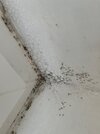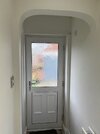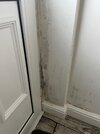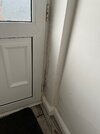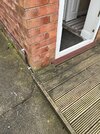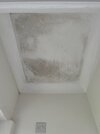Hello - I moved into a 1961 property 3 years ago and it had some decking already installed. Please see photos attached
Last winter and this winter we are getting damp at the bottom and lots of wet beading at the top of the door on the inside. Would your expert opinions put this down to the decking?
If that is the case - would taking the decking out rectify the issue or will more work be required after this?
Also we are getting mould on the ceiling above - is this all related?
Thanks in advance for any advice
Last winter and this winter we are getting damp at the bottom and lots of wet beading at the top of the door on the inside. Would your expert opinions put this down to the decking?
If that is the case - would taking the decking out rectify the issue or will more work be required after this?
Also we are getting mould on the ceiling above - is this all related?
Thanks in advance for any advice


